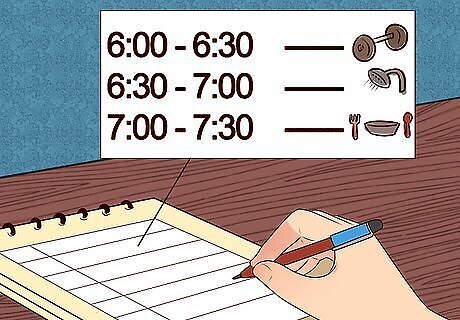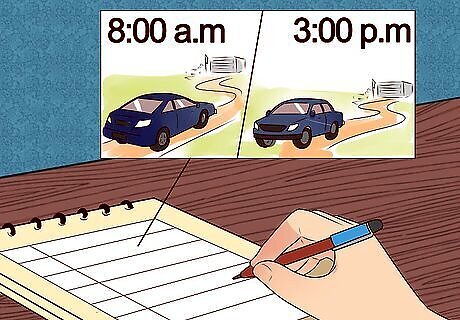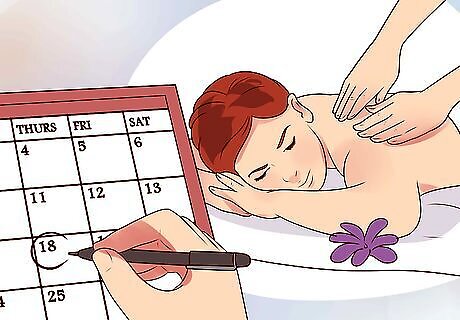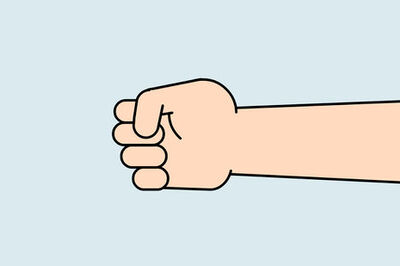
views
Designing a Daily Schedule

Figure out how you typically spend your time. Before you can figure out how to optimize your time, get a good sense for how you already manage day-to-day affairs. If you have to attend school or work, these hours are already managed for you. In your free time, you have a much greater degree of flexibility. Spend a few days keeping track of how you spend your time. Write down exactly what you do every day. Pay close attention to how you spend free time. Do you play video games, or do you clean the house? Make a list of these activities and how long you spend on them.

Estimate how long you spend commuting for school, work and errands. It’s likely that you spend a relatively large amount of some of your days simply traveling to or from work or school, or running errands. This is time that’s necessary to keep your days organized and complete essential tasks. Notice how long these commutes typically take and allot enough time in your daily schedule to get from place to place. Adjust your schedule based upon these times.

Determine when you are most productive. As you design your daily schedule, think about how you will structure your various tasks. It might be a good idea to rearrange some of your tasks so that you can maximize your productivity. For example, figure out when you can work most productively. Determine when you will get distracted answering the phone or emails. You may find that you work best in the early morning, while mid-afternoon is a time when you get bombarded with phone calls.

Pay attention to how your routines affect your daily life. Keeping a daily schedule is very much about learning how routines affect your day-to-day life. Sometimes routines can be bad habits, which might actually keep you from getting pleasure or reaching your goals. Other routines are necessary for these things to occur. As you experiment with scheduling your time, think about the role routines already play in your life. For example, you might notice a trend in your daily life whereby you tire yourself out doing an activity you enjoy. Then you don’t have the desire or energy to do anything else, such as working towards a longer term goal. On the other hand, you could spend all of your time meeting one social demand after the next to where you never make time for self-care. Each of these routines can be equally harmful to your personal well-being. So it’s important to take note of how routines affect your life. As you start to notice the routine in your life that keep you from meeting your goals or getting what you desire, think of ways to alter them in order to get more out of your time. This could be as simple as putting restrictions around certain activities, such as playing video games. Perhaps you’ll only permit yourself to play them after you complete a task relevant to a long-term goal. Or maybe it is necessary to learn how to tell people no when they ask you to do something so that you can work on self-care.

Reduce wasted time. There may be parts of your day that seem to waste time. Many of these may be unavoidable, such as your morning commute or going to the post office at lunchtime when it’s busiest. Take a look at your schedule and figure out the moments in which time is wasted. Think about how you might rearrange your schedule to reduce time wasters. If you can’t rearrange things, consider if you can multitask. Get some quiet time during your morning commute by riding the bus. Then you may be able to enjoy some coffee while reading a novel.

Plan out your day the night before. It’s usually best to make plans for your day in advance. If you have never made a schedule before, it might take some time to work out all of the kinks. Don’t expect yourself to figure this out the first day, or even the first week. Make a rough schedule for the next day where you list all of the activities you want to complete and the amount of time you want to spend on each. Allow some flexibility as you get acclimated to having your time budgeted.
Balancing Short-Term Obligations with Long-Term Goals

Incorporate your long-term goals into your daily activities. While figuring out what you want to do each day might sound relatively straightforward, this could actually be the most difficult and essential step in learning how to keep a daily schedule. It’s not always easy to figure out your goals and to achieve them. At the same time, what you want to do in the moment may not align with your long-term goals. It’s best to balance these out as much as possible, as opposed to only focusing on one or the other. Set your long-term goals. Do you have a particular job or career you’d like to pursue? Are there certain people you know who you’d like to become better friends with? Maybe you want to make a sports team at your school. Whatever your goals might be, getting them down on paper can make them seem more concrete than if they remain mere images inside your own head. Make a list of incremental things you can do to start achieving these goals. Plan time every day to do these activities.

Parse out goals you have from yourself from those other people have made for you. It is useful to get advice from others when figuring out your goals. But it’s important to recognize the goals that are actually relevant to your own desires. Your daily schedule may still have obligations that aren’t aligned with your own goals. For example, does your parent want you to become something specific, like a lawyer or a doctor? While such wishes are often associated with parents’ desires for their children to be happy and successful, this career path may not make the child happy and fulfilled. Talking to them about how their desires for you might stifle your independence can be a good first step to becoming more comfortable figuring these things out for yourself. The worst thing you can do is go through life doing what others want you to do and never figuring out what will truly make you happy. When you determine your own long-term goals, figure out how these fit with the expectations that other people have for you. You may not be able to completely avoid your obligations and other people’s expectations. But you can start to schedule your time to focus more diligently on your own goals.

Prioritize your to-do list. There are bound to be items on your daily to-do list that need to be done right away. Other tasks can wait. As you strategize the flow of your daily schedule, block off time for the most immediate tasks. You may have some tasks that are the same every day, while other tasks are a one-time occurrence. You may need to adjust your schedule to accommodate one-time activities. You can even plan for these in your daily schedule. Mark a block of time every day as “flexible” time. This can be used to take care of unforeseen tasks. If you don’t have a task for the day, you can use it to make progress on a personal long-term goal, such as hitting the gym or practicing the guitar.
Writing Down Your Schedule

Find the best medium to record your schedule. Having your schedule written down is one of the best ways to ensure that you’ll keep on track. If you have easy access to your schedule, you will get in the habit of checking it regularly. Figure out which method works best for you. Then you can access your schedule when you need a reminder about what’s next on the list. Some people prefer writing it down in a daily planner. Others like to keep track on a laptop or tablet. There are lots of useful scheduling apps for mobile phones. If you use a computer or phone to record your schedule, you can set reminders to prompt you when important tasks are coming up.

Budget your day in 30 minute segments. As you start to figure out your daily schedule, break up your day into half-hour segments. These chunks of time are manageable amounts in which to accomplish certain tasks. Then you don’t need to plan your schedule down to the minute.

Work your necessary activities into the schedule first. You will have obligations throughout the day that need to be accomplished at specific times. For example, you need to drop off your children at school at 8:00 a.m. You need to pick them up at 3:00 p.m. Fit these types of activities into your schedule first.

Fit in “flexible” time. After you have your obligations worked into your schedule, look for pockets of time that do not require specific activities. These are considered “flex” time. Now look at your long-term goals and start to fit activities into your schedule that will help you accomplish your goals. The flex time can also be used for unforeseen obligations or other activities that come up last-minute.

Refer to your schedule often. As you start to adjust to using a schedule, you should consult the schedule frequently. This will help remind you of your planned activities. This will also keep you on track so that you don’t spend too much time doing one activity or task.

Adjust your schedule as needed. As you start working through your schedule every day, you can assess how it’s working for you. Make adjustments based on how much time you’re spending on different tasks. Be sure to include your long-term goals so that you are sure to achieve them.
Making Time for Yourself

Develop ideas for maintaining self-care. Scheduling your time isn’t just important for being productive and meeting your social demands. It can also be quite helpful in keeping yourself healthy and happy. Researchers have found, for example, that college students who make sure to schedule time for self-care can handle stress better and meet their goals more successfully. Self-care is different for every person. It can include meditating, taking a nap, playing video games, calling a friend, or other activities. Figure out which activities work best for you in producing pleasure and/or reducing stress.

Plan fixed time in your schedule for self-care. Fixed time is a set amount of time that you dedicate to self-care. While you may understand that you need self-care, you may not actually do so unless you have set times that are specifically intended for self-care. Schedule a monthly massage, or plan for 30 minutes of video gaming every day. Making time for yourself will make it easier for you to tackle some of the more unpleasant obligations.

Reward yourself for completing your schedule successfully. As you successfully maneuver your day based upon the schedule that you’ve constructed, be sure to reward yourself for your hard work. Maybe keep your favorite candy in your pocket and allow yourself to indulge when you successfully complete a scheduled activity. This sort of positive reinforcement can help you associate functional changes in your behavior with pleasurable feelings.


















Comments
0 comment